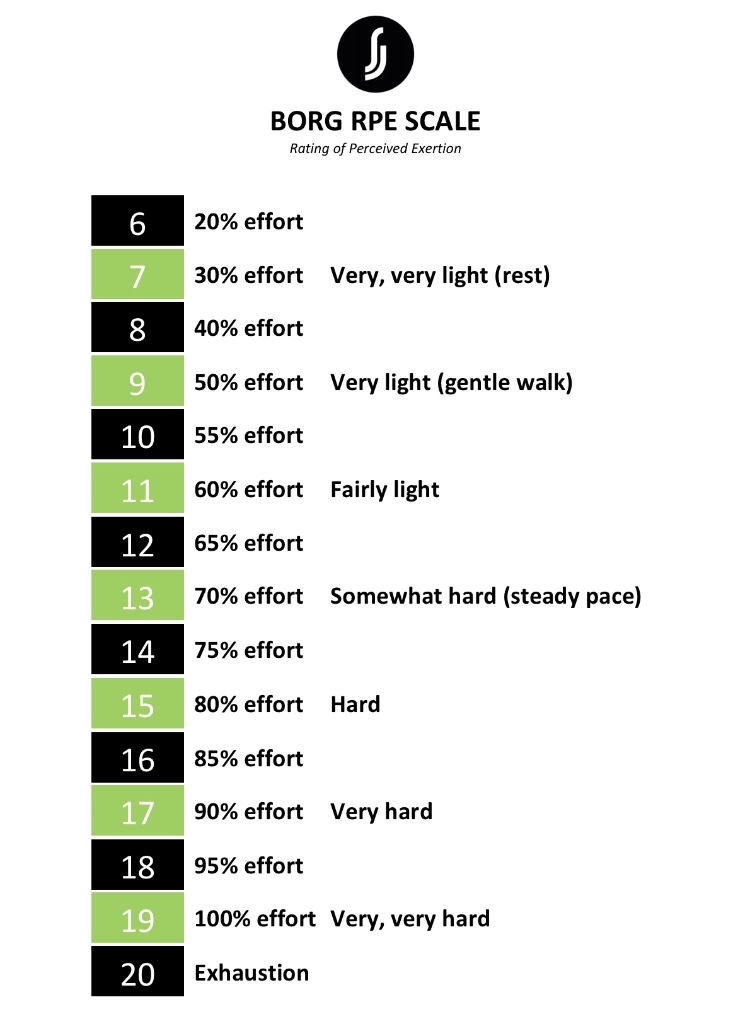Rate of Perceived Exertion
Rate of perceived exertion (RPE) is a subjective way to measure the intensity of primarily aerobic exercise. As the person exercising you would rate how you feel (your level of exertion) based on the scale presented to you. This allows yourself or your trainer to assess how hard you are working and adjust what you are doing accordingly. How you feel is generally based on your heart rate and breathing. If you are at rest your heart rate will be low and conversation is easy, however, if you are working at the other end of the scale your heart rate will be high and having a conversation is not possible.
There are more accurate ways to measure intensity with technology such as wearing a heart rate monitor, however, RPE is a great tool that costs nothing to use.
The Borg Scale
Dr Gunnar Borg developed the Borg Scale and today there are two scales.
The Borg RPE Scale – The original Borg Scale runs from 6-20. The scale was developed to measure physical strain or perceived exertion. It has been shown to be significantly correlated with heart rate and is considered to be a valid tool for monitoring exercise intensity (1).
The Borg CR10 Scale – The category-ratio (CR) scale runs from 0-10 and was developed to measure dyspnea (shortness of breath) but is now used more widely in many situations.
The RPE Scale and Heart Rate
The most accurate way to measure heart rate is with a heart rate monitor. However, the original Borg Scale allows for an approximate heart rate estimation based on exertion. This is achieved by multiplying the number by 10.
For example:
RPE 6 = 60 bpm (beats per minute)
RPE 16 = 160 bpm (beats per minute)
Borg RPE Scale

Borg CR10 Scale

Modified Borg CR10 Scale
The scale below is the Borg CR10 Scale modified by Foster et al.

References
1) Morishita S, Tsubaki A, Takabayashi T, Fu JB. Relationship between the rating of perceived exertion scale and the load intensity of resistance training. Strength Cond J. 2018 Apr;40(2):94-109. Available here
2) Foster C, Florhaug JA, Franklin J, et al. A new approach to monitoring exercise testing. J Strength Condit Res 2001; 15: 109–115.
3) Borg, A.V, Gunnar. (1982) Psychophysical bases of perceived exertion. Medicine and science in sports and exercise. Vol 14, no. 5, pp 377-381.
I hope this post was of value to you. I’d love to hear your thoughts, please do send me a message on Instagram (simonjamescoaching).
Thank you for reading.
Simon James



